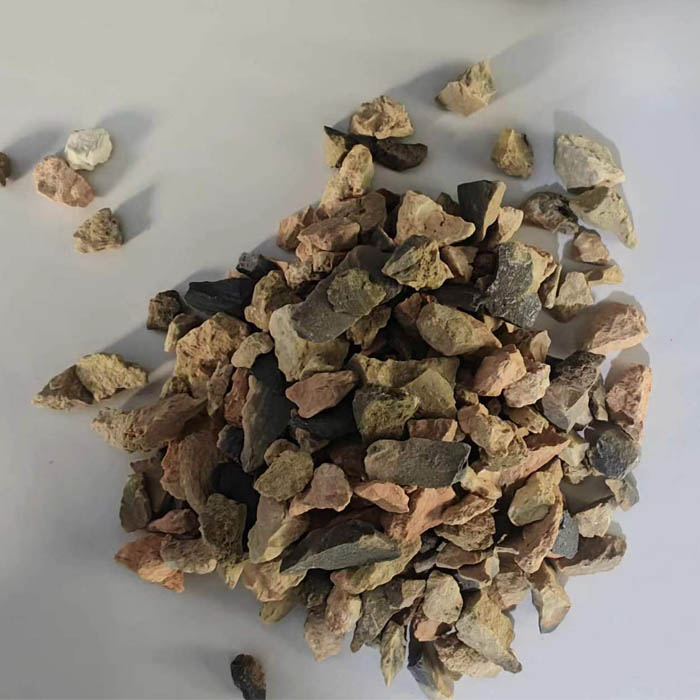Aug . 10, 2024 08:45 Back to list
Utilizing Recycled Materials for Enhanced Thermal Insulation Solutions in Export Markets
Recycled Materials as Thermal Insulation A Sustainable Solution
In the quest for sustainable building materials, the use of recycled materials as thermal insulation has emerged as a promising solution. With growing concerns about climate change, environmental degradation, and the depletion of natural resources, the construction industry is increasingly turning to recycled alternatives to meet its insulation needs. This article examines the benefits, methods, and potential of recycled materials in the thermal insulation sector, highlighting their role in promoting eco-friendly construction practices.
The Importance of Thermal Insulation
Thermal insulation is crucial in reducing energy consumption in buildings. It plays a significant role in maintaining comfortable indoor temperatures by minimizing the transfer of heat between the interior and exterior of a structure. Proper insulation not only lowers energy bills but also reduces greenhouse gas emissions associated with heating and cooling. Traditional insulation materials, such as fiberglass and foam board, while effective, raise concerns regarding their environmental impact and sustainability.
Recycled Materials A Sustainable Choice
Recycled materials offer a viable, eco-friendly alternative to conventional insulation products. Utilizing materials that would otherwise end up in landfills reduces waste and conserves raw resources. Common recycled materials used in thermal insulation include
1. Recycled Paper Products Cellulose insulation is produced from recycled paper, such as newspapers and cardboard. This biodegradable material is treated with fire retardants and provides excellent thermal performance.
2. Recycled Plastic Plastics are increasingly being repurposed into thermal insulation products. For instance, post-consumer plastic bottles can be transformed into polyester insulating fibers, contributing to energy efficiency while diverting waste from landfills.
3. Recycled Glass Shredded glass can be used to create insulation products that offer high R-values—measuring their resistance to heat flow—thereby enhancing energy efficiency in buildings.
4. Reclaimed Wood Salvaged wood can be repurposed into structural insulation panels, providing both thermal performance and a unique aesthetic appeal.
Benefits of Using Recycled Materials for Insulation
recycled materials as thermal insulation exporter

The incorporation of recycled materials into insulation systems brings with it numerous benefits
- Environmental Impact By reducing reliance on virgin materials, recycled insulation helps lessen habitat destruction, energy consumption associated with manufacturing, and carbon emissions.
- Cost-Effectiveness While some recycled insulation products may have higher initial costs, they often provide long-term savings through reduced energy bills. Additionally, the growing availability of these materials is driving down costs.
- Improved Indoor Air Quality Many traditional insulation materials can off-gas hazardous chemicals. Recycled materials, especially cellulose, tend to have fewer volatile organic compounds (VOCs), promoting healthier indoor environments.
- Innovation and Job Creation The rise of recycled thermal insulation materials is driving innovation in the construction sector and creating jobs in recycling and material repurposing industries.
Challenges and Considerations
Despite the myriad advantages, there are challenges associated with recycled insulation materials. The consistency in quality can vary, and some applications may require specific performance certifications. Furthermore, public perception and awareness of the benefits of recycled insulation still lag behind traditional options.
The Future of Recycled Thermal Insulation
As the construction industry pivot toward sustainability, the use of recycled materials as thermal insulation holds significant potential. Innovations in recycling technology and increased regulatory support can drive further development in this sector. With continued education and awareness raising, recycled thermal insulation can become an essential component of eco-friendly building practices.
In conclusion, the integration of recycled materials into thermal insulation systems not only addresses the urgent need for sustainable building materials but also represents a significant step toward a greener, more efficient future for the construction industry. As consumers and builders become more conscious of environmental issues, recycled insulation will likely play a pivotal role in shaping the homes and buildings of tomorrow.
-
Eco-Friendly Granule Covering Agent | Dust & Caking Control
NewsAug.06,2025
-
Fe-C Composite Pellets for BOF: High-Efficiency & Cost-Saving
NewsAug.05,2025
-
Premium Tundish Covering Agents Exporters | High Purity
NewsAug.04,2025
-
Fe-C Composite Pellets for BOF | Efficient & Economical
NewsAug.03,2025
-
Top Tundish Covering Agent Exporters | Premium Quality Solutions
NewsAug.02,2025
-
First Bauxite Exporters | AI-Optimized Supply
NewsAug.01,2025
